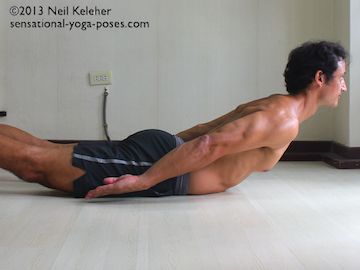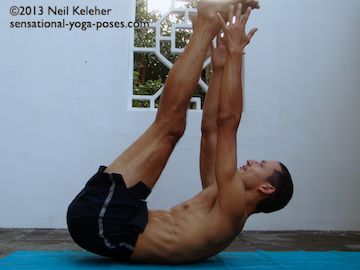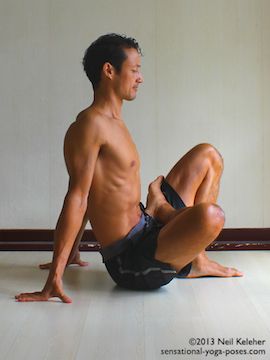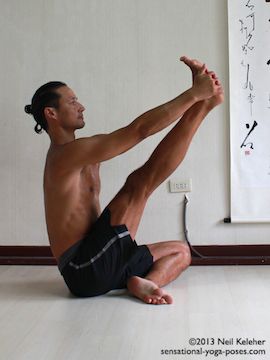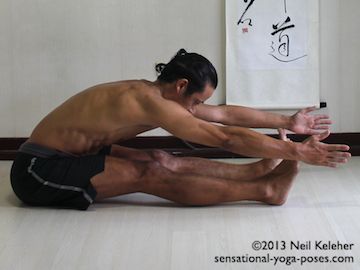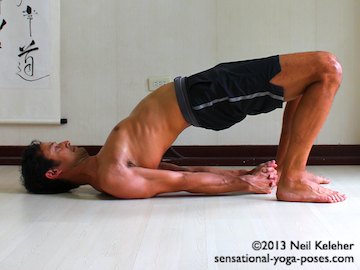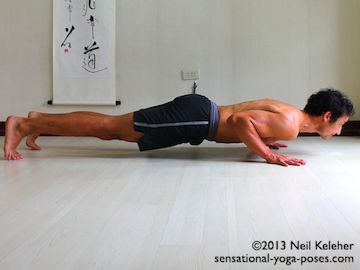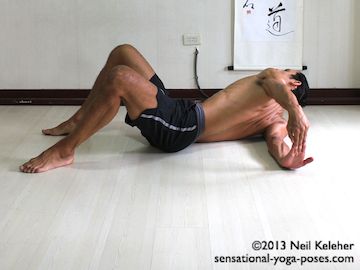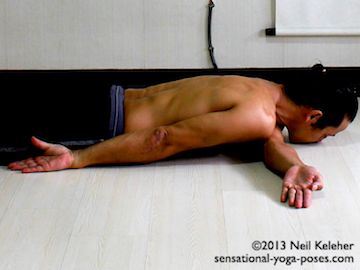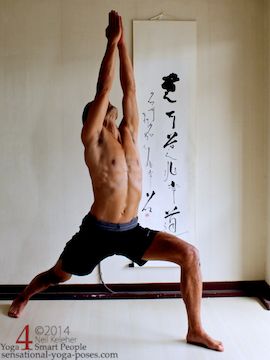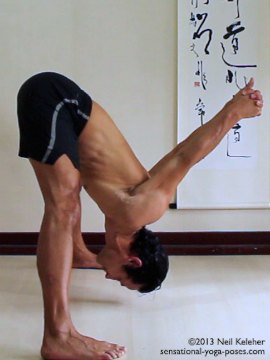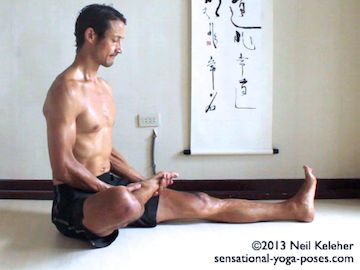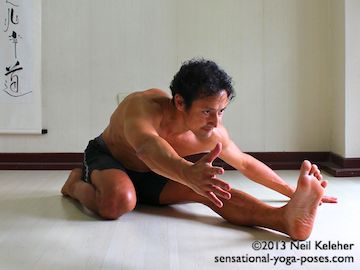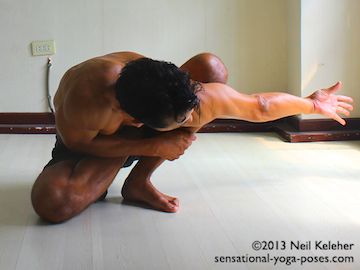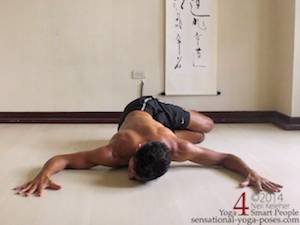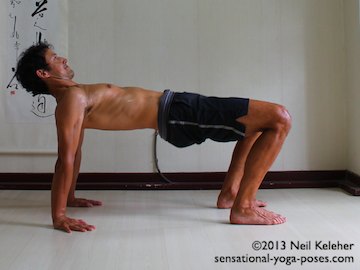Counterposes for Yoga Poses
Keeping Your Body In Balance (Or Helping Your Body Feel Good)
Someone asked me about counterposes. I remember when I first started doing yoga (especially free flowing yoga seqeunces) this was one of my big concerns. What if I don't do the right counterposes (or "balancing" actions)…
First of all I'd suggest that these should be thought of as a way of returning the body to center, to making your body feel more comfortable.
So if I've been doing back bends with a focus on using my spinal erectors, such as in locust,
it can feel good to bend the spine forwards.
This could be a relaxed "bent back hero",
or an active pose like dead dog reach.
In either case the spine is bent forwards. In one the abs are relaxed in the other they are engaged. But in both, the spine is bent forwards!
Making the Body Feel Good Again
As I focus on feeling my body I often choose balancing poses based on their effect with the desire, in general, to make my body feel good again.
As an example, I've recently been visiting marichyasana b and d, where one leg is in lotus. I'm still playing with the pose and I found that the outside of my lotus knee got a bit of a stretch. The balancing action I used was modified heron pose with a focus on straightening the knee (making it feel strong) and/or focusing on activating the side of the thigh to help alleviate the "stretched" feeling at the outside of the knee.
Balancing Energizing Poses with Cooling Yoga Poses (And Vice Versa)
Sometimes if I do a lot of relaxed stretching, or a lot of forward bends, I need something to energize or wake me up. So in this case the counterpose might be bridge pose or even wheel pose. In either case the focus can be on using the legs.
Often I feel a lot more awake.
That being said, if I've done a lot of leg work or feel too excited then I need to cool down and/or calm down and so I use forward bends to cool down.
Counterbalancing Strengthening Poses with Poses for Improving Flexibility
Sometimes I may be working on strengthening, say yoga push ups. The counterpose I may use is lapasana or bennitasana to stretch the muscles that were active.
If I've been doing squats of chair pose or wheel pose where the front of the thighs have been active then I might stretch them with a version of hero, or let them relax in a forward bend, or help them recover by lifting the legs in dead dog or shoulder stand or plough pose.
Counterposing with the Opposite Movements
If I'm stretching the arms and use lapasana to stretch the front of the shoulders then I'll counterpose it by using dragonfly. One has the arms out to the sides. The other has the arm across the body.
If I do an arms over the head stretch then I'll counterpose with the arms down and back.
Some poses like side bends and twists are their own counterpose. You do one side and then the other and are balanced.
You can also counterpose for rotated leg or arm positions.
If you do lotus which is an external rotation with the knee bent, then you might also do hero which is an internal rotation. Also note that in lotus the shin folds to the inside of the thigh, in hero it folds to the outside.
If you stretch the inner thighs in splits or half split, then counterpose by stretching the outer thigh with pigeon or standing side bend (push the hips to the side.)
If you do a pose with the arms internally rotated like in some binding poses, then counterpose with an external rotation.
And if you do arm balances where the arms are in front of the body, you may find that a pose like table top, where the arms are behind the body helps.
Learning to Feel
If you rest for a moment or two after doing a yoga pose you can notice the way it makes you feel.
The more time you spend noticing how you feel the easier it will be to know what pose to do to counterpose the pose that you've just done.
Then instead of memorizing counterposes, you'll just know what to do by recognizing what your body is telling you.
Published: 2013 10 31
Updated: 2021 02 02

